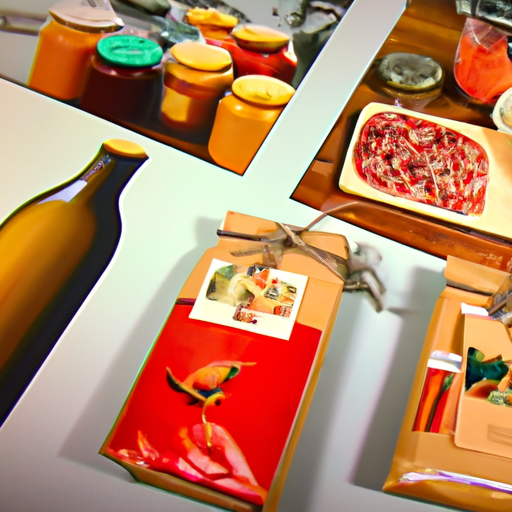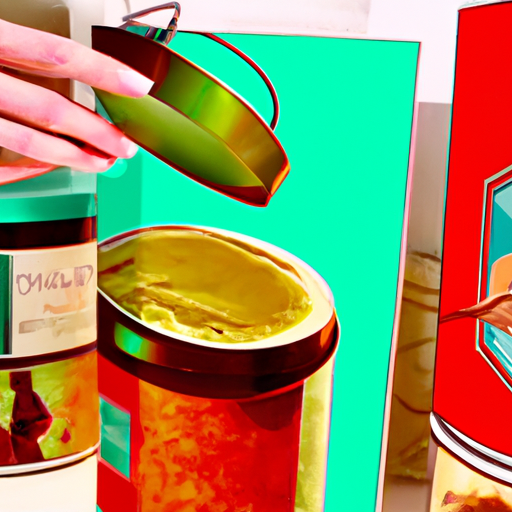
-
Table of Contents
- Package Design for Artisanal Foods: Handcrafted Charm
- The Power of Packaging
- Key Elements of Artisanal Food Packaging
- 1. Authenticity
- 2. Simplicity
- 3. Handcrafted Touch
- 4. Storytelling
- 5. Quality Assurance
- Successful Examples of Artisanal Food Packaging
- 1. Mast Brothers Chocolate
- 2. Bee Raw Honey
- 3. La Boîte Spice Blends
- Case Study: The Impact of Package Redesign
- Conclusion
Package Design for Artisanal Foods: Handcrafted Charm

When it comes to artisanal foods, the packaging plays a crucial role in attracting customers and conveying the essence of the product. In a market saturated with mass-produced goods, artisanal foods stand out for their unique flavors, high-quality ingredients, and the personal touch of the artisans who create them. To capture the attention of discerning consumers, package design must reflect the handcrafted charm that sets artisanal foods apart. In this article, we will explore the importance of package design for artisanal foods and provide valuable insights on how to create compelling packaging that resonates with customers.
The Power of Packaging
Package design is not just about aesthetics; it is a powerful tool that can influence consumer perception and purchasing decisions. According to a study conducted by Nielsen, 64% of consumers try a new product because the packaging catches their eye. Furthermore, 41% of consumers have purchased a product again because they liked the packaging. These statistics highlight the significant impact that packaging has on consumer behavior.
For artisanal food producers, packaging is an opportunity to tell their unique story and differentiate themselves from mass-produced alternatives. The right package design can evoke emotions, create a sense of authenticity, and communicate the care and craftsmanship that goes into each product. It is a chance to establish a connection with the consumer and build brand loyalty.
Key Elements of Artisanal Food Packaging
When designing packaging for artisanal foods, several key elements should be considered to capture the essence of handcrafted charm:
1. Authenticity
Authenticity is at the core of artisanal foods, and the packaging should reflect this. Using natural materials, such as kraft paper or recycled cardboard, can convey a sense of sustainability and craftsmanship. Avoiding excessive gloss or plastic coatings can enhance the perception of authenticity.
2. Simplicity
Artisanal foods are often associated with simplicity and purity. The packaging design should reflect this by avoiding clutter and unnecessary embellishments. Clean lines, minimalistic typography, and a focus on the product itself can create an elegant and sophisticated look.
3. Handcrafted Touch
One of the key appeals of artisanal foods is the personal touch of the artisans who create them. Incorporating hand-drawn illustrations, handwritten labels, or even a personalized note can add a sense of intimacy and charm to the packaging. This personal connection can resonate with consumers and make them feel more connected to the product.
4. Storytelling
Every artisanal food product has a story behind it, whether it’s the family recipe passed down through generations or the unique sourcing of ingredients. Packaging should tell this story, providing consumers with a glimpse into the heritage and craftsmanship that goes into each product. Including a brief narrative or using imagery that reflects the product’s origin can create a deeper connection with the consumer.
5. Quality Assurance
Artisanal foods are known for their high-quality ingredients and production methods. Packaging should convey this commitment to quality assurance. Including certifications, such as organic or fair-trade labels, can reassure consumers about the product’s authenticity and ethical sourcing.
Successful Examples of Artisanal Food Packaging
Several brands have successfully captured the essence of handcrafted charm through their packaging design. Let’s explore some notable examples:
1. Mast Brothers Chocolate
Mast Brothers Chocolate is renowned for its artisanal approach to chocolate-making. Their packaging design reflects their commitment to craftsmanship and quality. The chocolate bars are wrapped in beautifully designed paper, reminiscent of old-world craftsmanship. The use of hand-drawn illustrations and a simple color palette creates a sense of authenticity and charm.
2. Bee Raw Honey
Bee Raw Honey takes a unique approach to packaging by using glass jars with minimalistic labels. The simplicity of the design allows the natural colors and textures of the honey to shine through, emphasizing the purity and quality of the product. The handwritten labels add a personal touch, reinforcing the connection between the consumer and the beekeepers who produce the honey.
3. La Boîte Spice Blends
La Boîte Spice Blends stands out with its bold and vibrant packaging design. The spice blends are packaged in sleek, cylindrical tins with colorful labels inspired by different cultures and cuisines. The use of intricate patterns and typography creates a sense of adventure and exoticism, enticing consumers to explore new flavors.
Case Study: The Impact of Package Redesign
A case study conducted by a small artisanal jam producer highlights the significant impact that package redesign can have on sales and brand perception. The company initially had a simple, generic label design that did not effectively communicate the handcrafted nature of their products. After undergoing a package redesign that incorporated hand-drawn illustrations, a rustic color palette, and a brief narrative about the sourcing of ingredients, the company experienced a 30% increase in sales within the first month. The new packaging resonated with consumers, who appreciated the attention to detail and authenticity conveyed through the design.
Conclusion
Package design plays a crucial role in capturing the essence of handcrafted charm for artisanal foods. By focusing on authenticity, simplicity, the handcrafted touch, storytelling, and quality assurance, producers can create packaging that resonates with consumers and sets their products apart from mass-produced alternatives. Successful examples, such as Mast Brothers Chocolate, Bee Raw Honey, and La Boîte Spice Blends, demonstrate the power of effective package design in attracting customers and building brand loyalty.
As the market for artisanal foods continues to grow, investing in compelling package design is essential for artisanal food producers who want to stand out in a crowded marketplace. By leveraging the power of packaging, artisans can effectively communicate their unique stories, connect with consumers on a deeper level, and ultimately drive sales and brand loyalty.
